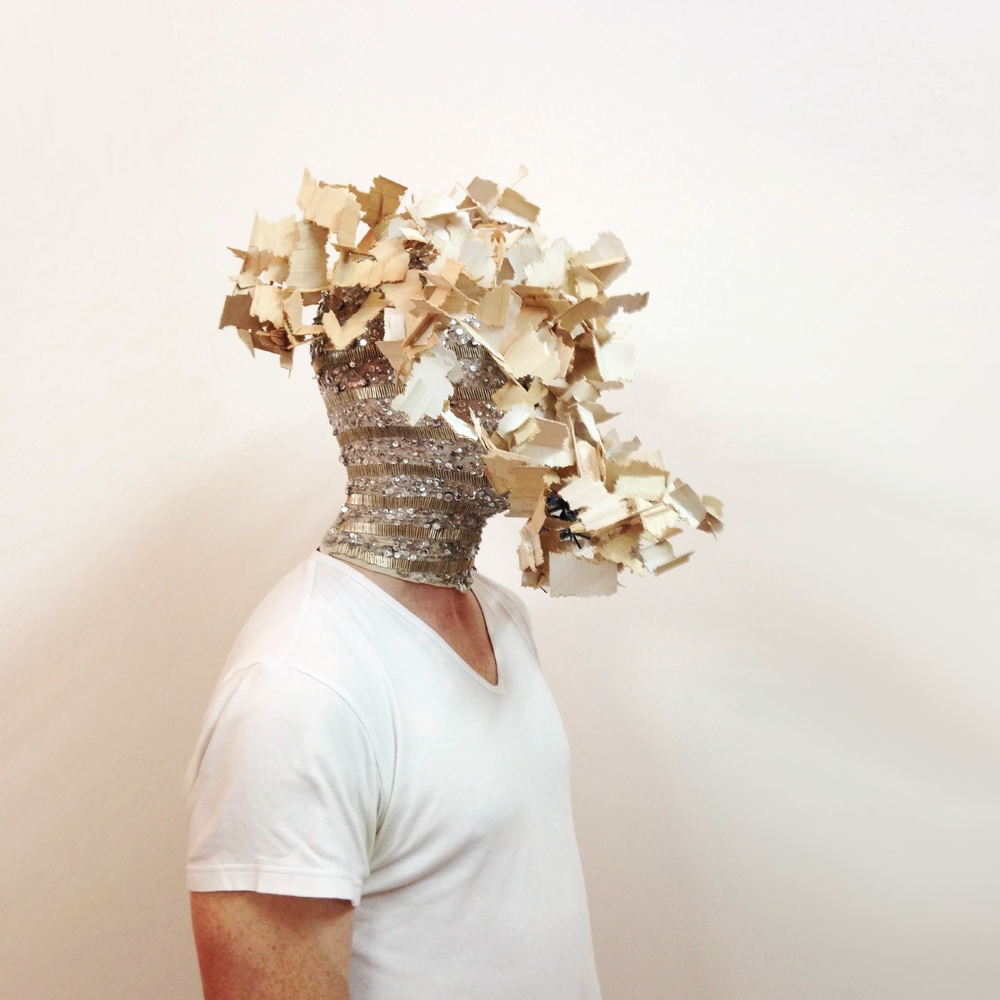
Facial Dystonia (or Crano-facial dystonia) is a neurological movement disorder in which sustained or repetitive muscle contractions in the face result in twisted or abnormal fixed postures. Even though its causes are complex, Dystonia – in all its various iterations – is the third most common movement disorder in the world. When artist Tiago Valente suffered a bout of the syndrome, he decided to translate the subsequent pain, confusion and frustration into a stunning collection of headpieces called ‘Dystonia’.
The New York-based Valente suffered his first episode of Facial Dystonia on 17 December 2013. Inspired by the condition, three days later he began work on his Dystonia project. He spent hours sitting in front of a mirror, recording his facial movements with time-lapse photography, and obsessively taking notes. Tracking the frequency, amount, trajectory and intensity of each spasm he experienced, Valente developed a unique organic metric system to record every bit of this data.
In a conversation with The Creators Project, Valente explained the project's genesis: “After my episode at the hospital and my decision to refuse treatment with haloperidol, the first impulse that hit my mind was to go straight to my studio in Shanghai (where I was living at the time, before I moved to New York). I sat in front of my table and I cried. Then I stood up and looked at myself in the mirror, slightly embarrassed from my own facial spasms and those sadly weird faces, trying to understand what the hell was going on in my brain and my nervous system.”


For Valente, all of the data he recorded began to reveal itself to him in two-dimensional shapes, representing what he saw as ‘explosions’ in his nervous system. He then interpreted these ‘explosions’ into curved, three-dimensional forms, which became the headpieces that make up his ‘Dystonia ‘ collection. Built by hand, the intricate sculptures are made from materials like wood, cardboard, tape, carbon fiber, foam, sequins, mirror shards, beads and more.
Although Valente’s symptoms have since almost completely disappeared, ‘Dystonia’ remains as his gorgeous articulation of the painful condition. Ordinarily leaving jarring facial distortions and frustrating discomfort in its wake, Valente’s interpretation instead leaves us with a stunning and fascinating interpretation of a little understood disorder.







